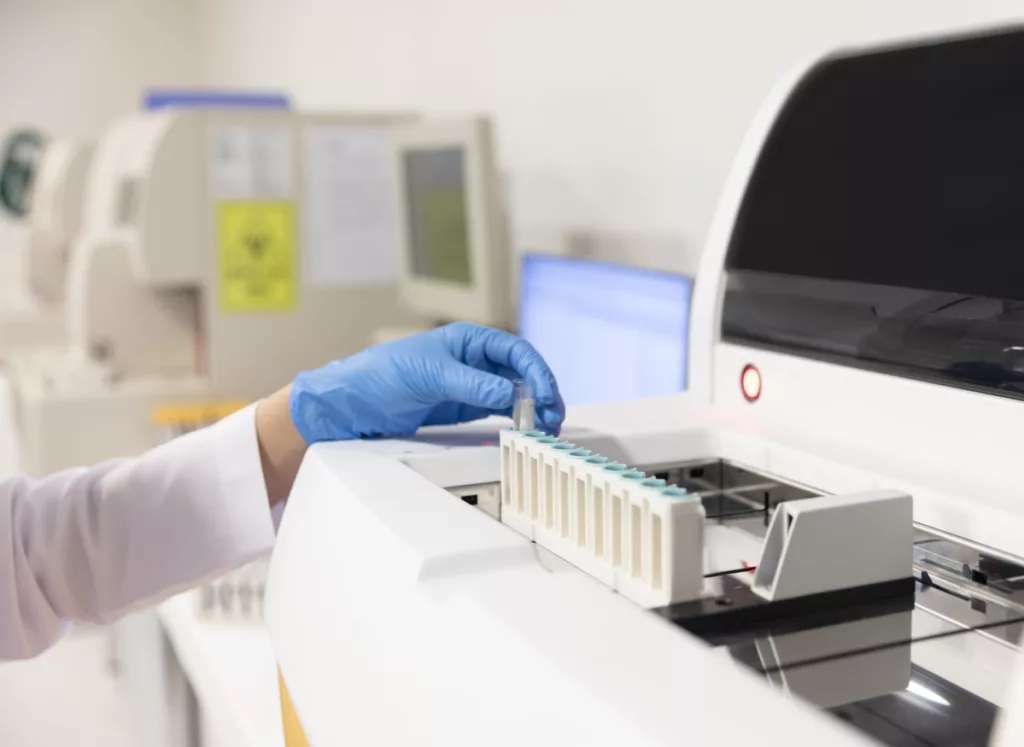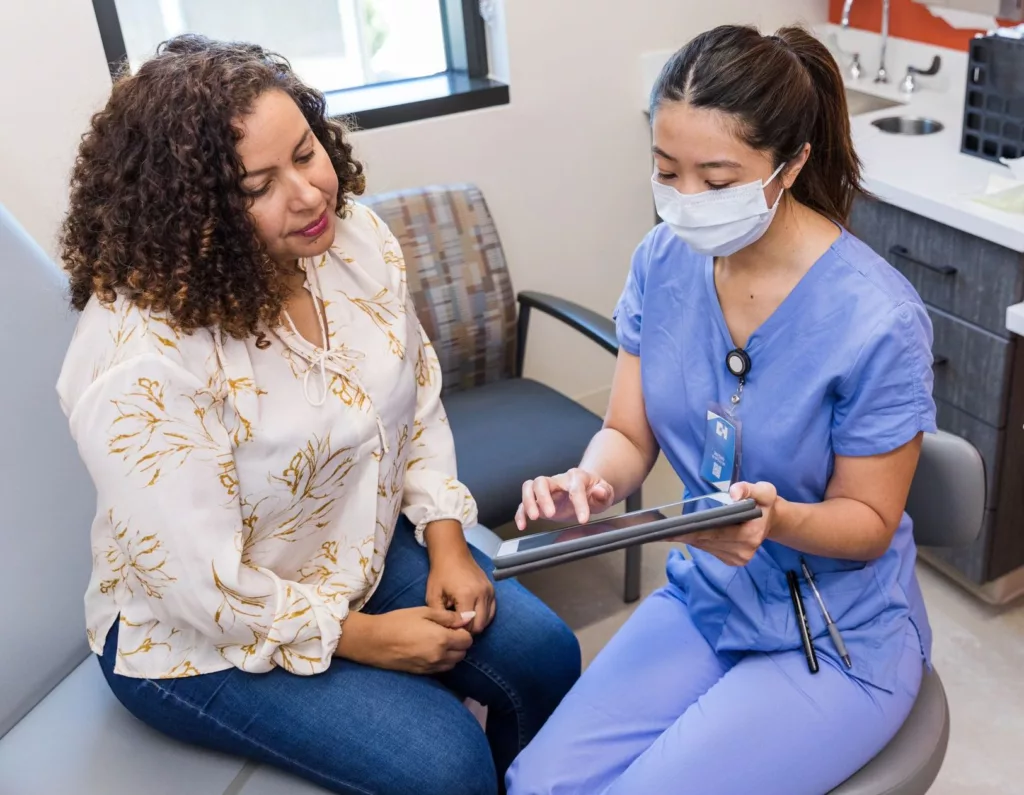
Join us as we unravel the transformative potential of ETOR in revolutionizing the delivery of diagnostic services and reshaping the future of public health.
The journey from patient encounter to diagnostic testing is crucial for both individual patient care and broader population health initiatives. Traditionally hindered by manual paper-based processes and disjointed communication channels, this journey has been marked by inefficiencies and delays. However, the advent of Electronic Test Orders and Results (ETOR) systems has transformed the landscape of diagnostic testing. ETOR systems offer a myriad of benefits, from streamlining laboratory workflows to enhancing communication and collaboration among healthcare stakeholders. This transformation holds immense promise for improving efficiency, accuracy, and patient outcomes in public health settings.
In this blog post, we delve into the multifaceted benefits of ETOR implementation by tracing the journey of a diagnostic test from specimen collection to result reporting. At each stop, we explore the pivotal role of ETOR in shaping the future of public health.
Step 1: Patient encounter for diagnostic testing
Our journey commences with the digital intake of patient data, marking a departure from the traditional clipboard and pen scenario in a bustling clinic waiting room. Instead of grappling with illegible handwriting and manual data transcription into Electronic Health Records (EHR), patients now have the convenience of entering their demographics, insurance details, and medical history via a user-friendly digital interface.
Whether completed online, through a mobile app, or with assistance from clinic staff, this process not only affords privacy but also ensures data accuracy from the outset, fostering trust between patients and healthcare providers.
Subsequently, providers can seamlessly initiate diagnostic tests using the patient’s pre-existing data within their platform. With no need for laborious phone calls to the lab or archaic faxing methods, the process is simplified to a few clicks: select the tests and transmit the orders.

Step 2: Specimen arrival at the lab
Our journey continues with the efficient arrival of digital orders at the laboratory, marking a seamless transition from clinical setting to laboratory workflow. In seconds, orders transmitted from healthcare providers materialize within the laboratory’s Information Management System (LIMS) or Laboratory Information System (LIS). While specimens are en route, the laboratory leverages incoming data to forecast demand. This in turn enables agile resource allocation and strategic planning for the day ahead.
In this meticulously orchestrated ETOR implementation, strict adherence to the Clinical Laboratory Improvement Amendments (CLIA) reigns supreme. Each requisition is scrutinized for completeness and every specimen label is meticulously verified, ensuring a flawless process devoid of specimen rejection.
Within the laboratory, the impact of ETOR is palpable. The era of manual order entry fades into memory, replaced by the streamlined efficiency of digital processes. Liberated from the burdens of deciphering illegible handwriting and navigating cumbersome paperwork, lab staff are empowered to devote more time to meaningful pursuits such as enhancing patient care and furthering diagnostic stewardship.
Step 3: Specimen processing & results access
In the laboratory setting, specimen processing represents a critical stage where precision and efficiency intersect to deliver timely and accurate results. ETOR systems play a pivotal role in streamlining this process, ensuring that results are available in near real-time for healthcare providers and patients.
One of the primary advantages of ETOR implementation is the swift availability of results. Through seamless integration with electronic health records (EHRs) and patient portals, test results are promptly disseminated to healthcare providers. This facilitates informed clinical decision-making without delay. And real-time access to results enhances the efficiency of patient care and promotes patient engagement by providing timely insights into their health status.
Additionally, ETOR systems enable the rapid identification and reporting of reportable conditions to Health Information Exchanges (HIE). By promptly identifying conditions of public health significance, such as infectious diseases or outbreaks, laboratories can collaborate with public health agencies to initiate timely response measures and mitigate transmission risks. This real-time exchange of critical information exemplifies the transformative impact of ETOR in enhancing disease surveillance and outbreak management efforts, ultimately contributing to the protection of public health.
Step 4: Epidemiology access to data
In the realm of public health, access to timely and accurate data is paramount for effective disease surveillance, outbreak detection, and response planning. As modern systems facilitate streamlined laboratory data transmission, epidemiologists gain access to a wealth of information in near real-time.
This accelerated access not only reduces the time spent on data cleaning and processing but also enables epidemiologists to focus their efforts on analyzing trends, identifying patterns, and detecting emerging threats without being bogged down by data inconsistencies and errors.
Moreover, the ability to access data on demand empowers epidemiologists to conduct comprehensive health disparities analyses across geographies, conditions, and settings. By disaggregating data and examining disparities in disease burden, epidemiologists can pinpoint vulnerable populations, tailor interventions, and address health inequities more effectively.
One of the most significant benefits of ETOR is the shortened time to identify disease outbreaks. Real-time data access allows epidemiologists to swiftly detect unusual patterns or clusters of disease, facilitating prompt investigation and response. This accelerated response time is critical for containing outbreaks, mitigating transmission risks, and protecting public health.
In essence, as epidemiologists gain access to data through modern systems, the landscape of public health surveillance is transformed. This shift empowers stakeholders with the tools needed to detect, respond to, and ultimately prevent the spread of infectious diseases and other threats to community health.

Step 5: CLIA inspection
As our journey culminates, we turn our attention to the critical role ETOR systems play in facilitating CLIA inspections for certified laboratories. ETOR offers invaluable support in both pre-analytic and post-analytic systems by:
- Streamlining data collection and documentation processes
- Providing CLIA auditors with comprehensive and accurate records of laboratory test orders
- Providing complete logs of all demographics and other corrective changes
- Providing time-specific insights:
- Collection date/time
- Specimen arrival at lab date/time
- Time testing began
- Time results were reported
- Turnaround time (TAT)
This data-driven approach not only ensures compliance with CLIA requirements but also enhances operational efficiency, easing the burden of laboratory staff in their audit preparation. In this way, we see how ETOR systems serve as indispensable tools for managing compliance with regulatory standards.
Conclusion
If you have worked in public health, you are intimately familiar with the hardships of constrained resources. The goal of public health is to protect the health of all people and their communities. This task is big enough without the added administrative burden of dated systems and processes. With ETOR, you can do more of the important life-saving work that inspired you to join this exciting and essential profession. Through ETOR, we can even further the work of diagnostic stewardship by ensuring timely and actionable data.
If these benefits sound even slightly intriguing, I invite you to reach out! I would love to explore the possibilities of ETOR with you and see how Primary can bring that to life in your organization. Contact Primary.Health or e-mail me at jack.hysell@primary.health.
ETOR Benefits at a Glance

